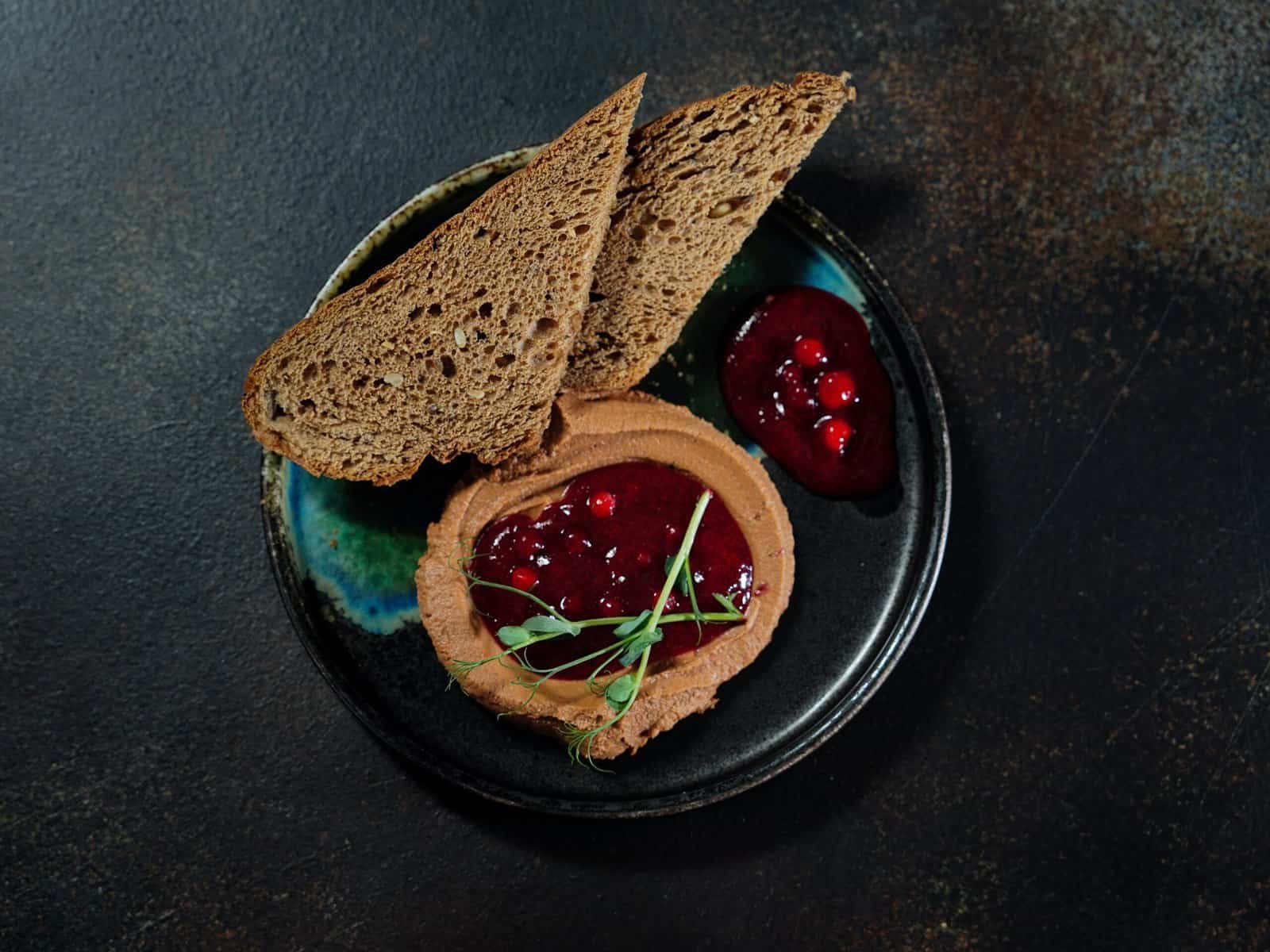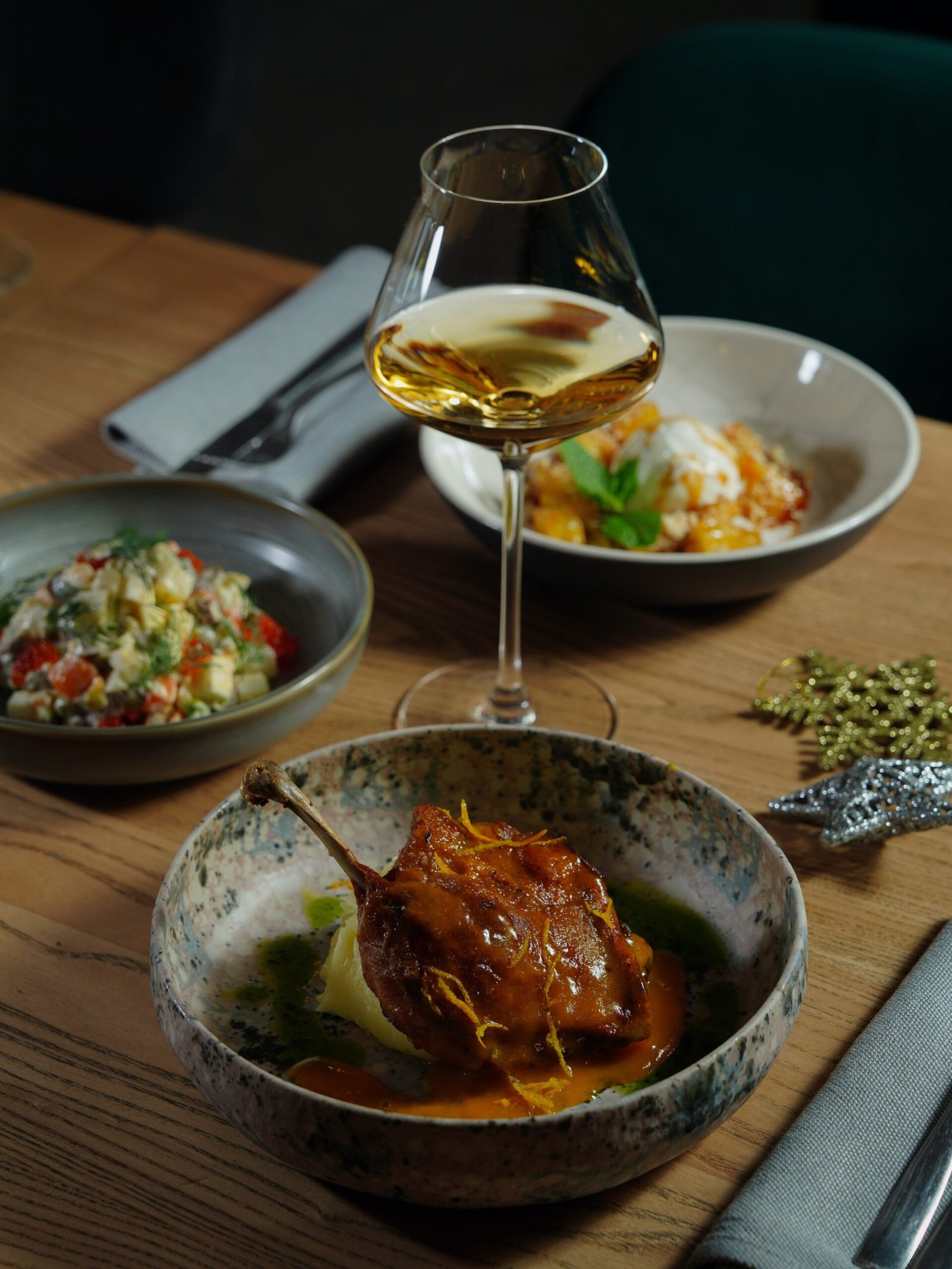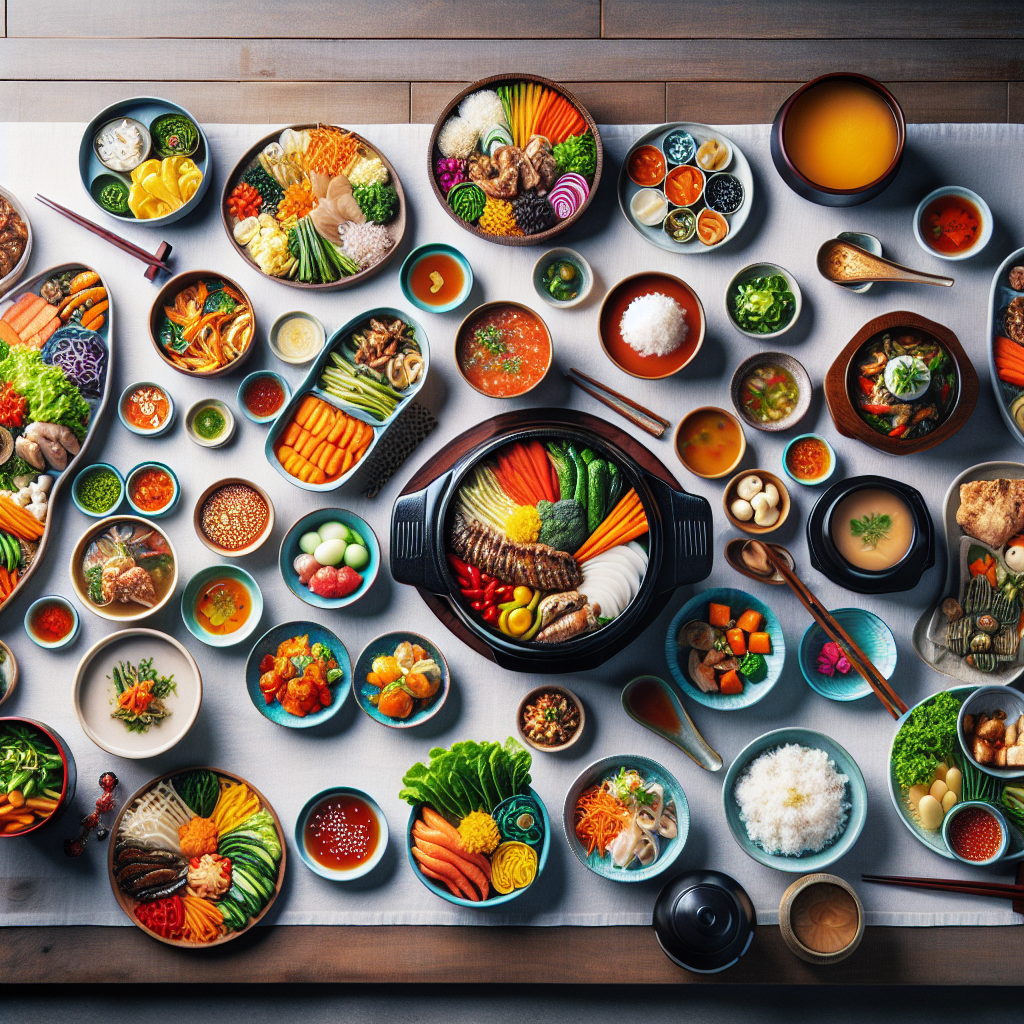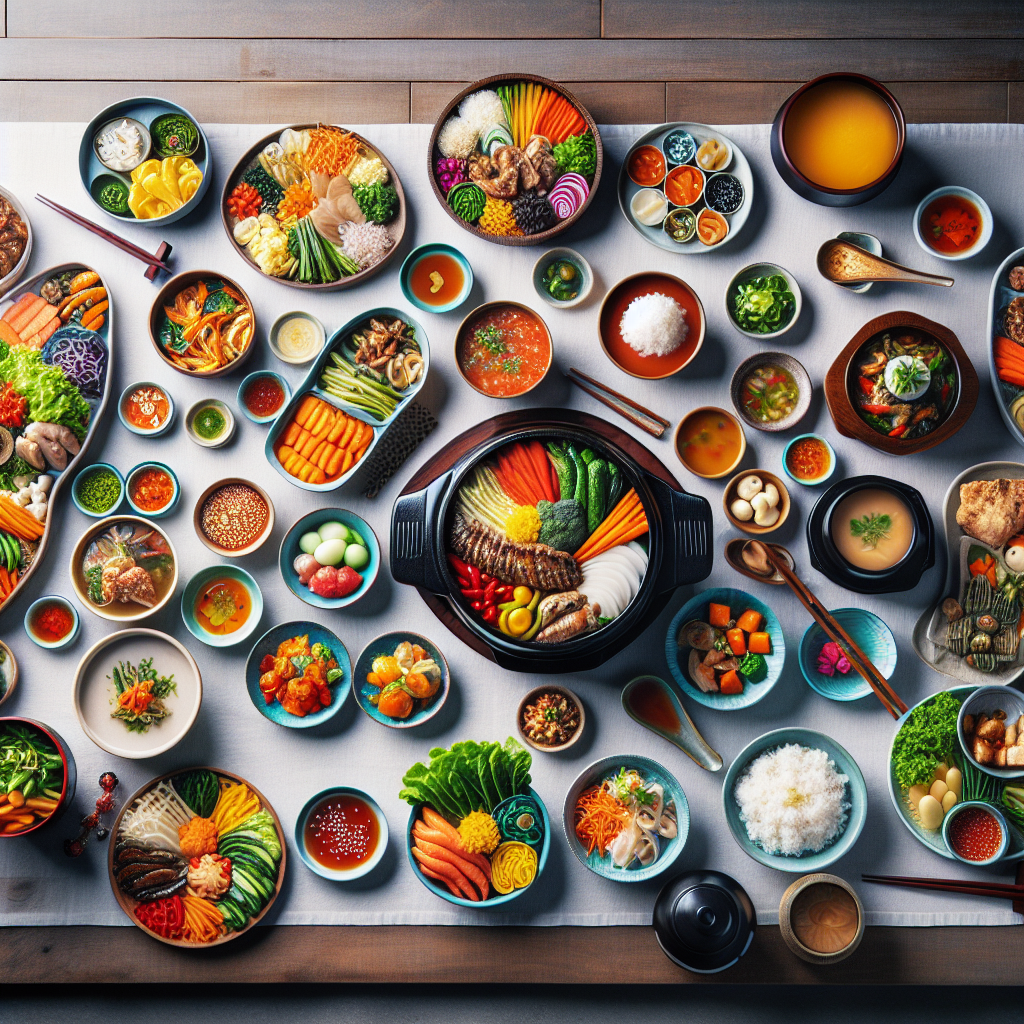Imagine sitting down to a traditional Korean meal, exciting aromas wafting from the small dishes set before you. As you take your first bite, you can’t help but notice the perfect harmony of flavors and textures that dance on your tongue. From the spicy kimchi to the refreshing banchan, every dish seems to seamlessly blend together, creating a culinary experience that is both satisfying and nourishing. But have you ever wondered how these traditional Korean meals achieve such a delicate balance? In this article, we will explore the fascinating concept of balance in Korean cuisine and discover how it is skillfully woven into every bite.

Nutritional Balance
The Importance of Nutritional Balance in Traditional Korean Meals
When it comes to traditional Korean meals, one of the key guiding principles is achieving nutritional balance. This philosophy recognizes the importance of incorporating a variety of nutrients in every meal to promote overall health and well-being. By balancing different food groups and ensuring a diverse range of flavors and textures, traditional Korean cuisine is designed to nourish both the body and the soul.
Variety of Nutrients in Traditional Korean Cuisine
Traditional Korean cuisine is known for its emphasis on fresh, seasonal ingredients and its use of diverse cooking techniques. This combination allows for a wide array of nutrients to be incorporated into each meal. From the staple grains like rice and barley, to a plethora of vegetables, legumes, and proteins, traditional Korean meals offer a well-rounded selection of essential vitamins, minerals, and macronutrients.
In addition to the variety of ingredients, traditional Korean cuisine also places great importance on the harmony of flavors. The five basic tastes – sweet, sour, bitter, salty, and spicy – are carefully balanced in each meal to ensure a satisfying and complete dining experience. This variety not only enhances the enjoyment of the meal, but also ensures that all taste buds are stimulated, leading to a better overall digestion and absorption of nutrients.
Balancing Different Food Groups in a Meal
Another important aspect of achieving nutritional balance in traditional Korean meals is the careful consideration of different food groups. Korean cuisine typically consists of a main dish, one or two side dishes, rice, soup, and kimchi. This combination ensures a balance of protein, carbohydrates, healthy fats, fiber, and various vitamins and minerals.
The main dish often includes a source of lean protein, such as grilled or stewed meat, tofu, or fish. This provides necessary amino acids for muscle growth and repair. The side dishes, known as “banchan,” are usually a mix of lightly seasoned vegetables, fermented vegetables, and soybean-based dishes, offering a range of vitamins, minerals, and beneficial phytochemicals.
Rice serves as the staple grain in traditional Korean meals, providing complex carbohydrates to fuel the body and essential dietary fiber for gut health. A bowl of soup, often made with a vegetable or seaweed-based broth, not only adds hydration to the meal but also offers additional nutrients and aids in digestion.
Lastly, kimchi, a fermented cabbage dish, is a staple in Korean cuisine and is served with virtually every meal. It is packed with probiotics that promote a healthy gut microbiome and aids in digestion. This combination of various food groups ensures a well-rounded and nutritionally balanced meal.
Five Colors of Food
Five Colors and Their Meanings in Traditional Korean Cuisine
The concept of the five colors in traditional Korean cuisine is deeply rooted in both aesthetics and nutrition. It is believed that incorporating foods of different colors ensures a diverse range of nutrients in a meal while also providing visual appeal. The five colors – red, yellow, green, white, and black – each hold their own significance and benefits to health.
- Red: Red foods such as chili peppers, tomatoes, and red beans are believed to stimulate the appetite and provide energy. They are rich in antioxidants and lycopene, which may help in protecting against certain types of cancers and maintaining heart health.
- Yellow: Yellow foods like pumpkin, sweet potatoes, and yellow peppers are thought to promote digestion and strengthen the immune system. They are high in beta-carotene, which converts to vitamin A in the body and supports healthy vision, skin, and mucous membranes.
- Green: Green foods including spinach, cucumber, and green tea are known for their detoxifying properties and ability to support liver function. They are abundant in phytochemicals, vitamins, and minerals, all of which are crucial for maintaining overall health and vitality.
- White: White foods like mushrooms, garlic, and tofu are believed to have antibacterial and anti-inflammatory properties. They are often associated with boosting immunity and promoting healthy digestion.
- Black: Black foods such as black sesame seeds, seaweed, and black beans are thought to provide nourishment to the kidneys and promote longevity. They are rich in minerals like iron and calcium, as well as antioxidants that help combat oxidative stress in the body.
Incorporating the Five Colors in a Meal
To ensure a nutritionally balanced meal, traditional Korean cuisine focuses on incorporating these five colors in various dishes. A typical Korean meal will often have a main dish or soup that represents one or two of the colors, accompanied by an assortment of banchan that cover the remaining colors.
For example, a bowl of bibimbap, a popular Korean rice dish, encompasses all five colors. The rice serves as a neutral base, while the various toppings such as sautéed vegetables, marinated meat, and a fried egg each contribute to a different color. This not only creates a visually vibrant dish but also ensures that a wide range of nutrients is present.
Similarly, the banchan, which are served in small portions alongside the main dish, are carefully chosen to cover the remaining colors. Seasoned spinach, pickled radish, fermented cabbage, and soybean sprouts are just a few examples of the side dishes commonly found in a Korean meal, each contributing to the overall balance of colors and flavors.
By intentionally incorporating these five colors into a meal, traditional Korean cuisine not only creates a visually appealing dining experience but also ensures a diverse range of nutrients, promoting overall health and well-being.
Yin and Yang
Understanding Yin and Yang in Traditional Korean Meals
In traditional Korean meals, the concept of Yin and Yang plays a significant role in achieving balance. Yin and Yang are opposing but complementary forces in nature, representing the principles of dark and light, coolness and warmth, and rest and activity. Traditional Korean cuisine seeks to balance these energies in each meal to ensure harmony and optimal health.
On a broader level, Yin and Yang are used to classify foods based on their energetic properties. Yin foods are considered cooling, calming, and moistening, while Yang foods are warming, stimulating, and drying. The balance of Yin and Yang in a meal is thought to promote equilibrium in the body and contribute to overall well-being.
Balancing Yin and Yang Foods in a Meal
To achieve the ideal balance of Yin and Yang in a meal, traditional Korean cuisine often combines a variety of ingredients and cooking methods. For example, a common Korean meal might include a cool and refreshing vegetable side dish, such as cucumber salad, alongside a hot and spicy stew or grilled meat.
Cool and Yin ingredients, such as cucumbers, radishes, and lettuce, are often enjoyed raw or prepared with minimal cooking to preserve their cooling properties. These ingredients help to balance the warming effects of other dishes and promote hydration and digestion.
On the other hand, hot and Yang ingredients, such as red pepper paste, garlic, and ginger, are frequently used to add flavor and spice to traditional Korean dishes. These ingredients provide warmth and energy to the body and are often used in marinades, stews, or stir-fried dishes.
By incorporating both Yin and Yang elements into a meal, traditional Korean cuisine not only achieves a harmonious balance of flavors and textures but also ensures a well-rounded and nourishing dining experience.
Hot and Cold Foods
The Concept of Hot and Cold Foods in Traditional Korean Cuisine
In traditional Korean cuisine, the concept of hot and cold foods goes beyond their physical temperature. It refers to the inherent properties of the ingredients and how they affect the body’s internal balance. The classification of hot and cold foods is based on their energetic qualities and their impact on the body’s energy, or Qi.
Hot foods are believed to generate heat, increase metabolism, and stimulate the body’s energy. They are often warming in nature and can aid in digestion and circulation. Examples of hot foods in Korean cuisine include ginger, garlic, chili peppers, and grilled meats.
Cold foods, on the other hand, have a cooling effect on the body and help to reduce internal heat. They are often hydrating, soothing, and can help to balance the body’s energy. Cold foods in Korean cuisine include cucumbers, watermelon, tofu, and certain types of seafood.
Balancing Hot and Cold Foods for Optimal Health
Achieving a proper balance of hot and cold foods is essential in traditional Korean meals to promote optimal health and well-being. Consuming an excess of hot or cold foods can disrupt the body’s Qi and lead to imbalances or discomfort.
To maintain the balance, traditional Korean cuisine often combines hot and cold ingredients within a meal. For example, a spicy and flavorful kimchi stew might be served with a cool and refreshing cucumber and seaweed salad. This pairing offers the benefits of both hot and cold properties, providing a well-rounded and balanced dining experience.
In addition to the combination of hot and cold ingredients, the temperature at which foods are consumed also plays a role in achieving balance. For instance, it is common in Korean culture to enjoy a warm bowl of soup or rice alongside cold banchan. This temperature contrast helps to promote digestion and ensure a harmonious balance within the body.
By incorporating both hot and cold foods in a considered manner, traditional Korean cuisine not only enhances the flavor and texture of a meal but also supports the body’s natural balance and overall well-being.

Seasonality
Emphasizing Seasonal Ingredients in Traditional Korean Meals
Traditional Korean cuisine places great emphasis on utilizing seasonal ingredients to ensure the freshest flavors and optimal nutritional value. The principle of seasonality recognizes that each season offers a unique array of produce and pays homage to the natural cycles of growth and harvest.
In Korean culture, the changing seasons are celebrated through various festivals and rituals that revolve around food. It is believed that consuming foods that are in season helps to align the body with the surrounding environment and supports overall health and vitality.
Balancing Seasonal Foods in a Meal
To achieve balance, traditional Korean cuisine incorporates a variety of seasonal ingredients into each meal. This ensures that the body receives a diverse range of nutrients and antioxidants throughout the year.
In the spring, when fresh greens and blossoms abound, traditional Korean dishes might feature young greens, edible flowers, and fragrant herbs. These ingredients are believed to support gentle cleansing and rejuvenation after the long winter months.
Summer brings an abundance of fruits, vegetables, and seafood that are hydrating and cooling, perfect for combating the heat. Traditional Korean meals during this season often incorporate watermelon, cucumbers, tomatoes, and various banchan with refreshing flavors.
As autumn arrives, heartier ingredients come into focus, such as root vegetables, mushrooms, and nuts. These ingredients are believed to provide grounding energy and support the body’s transition into the colder months.
Finally, winter brings its own selection of seasonal ingredients that are warming and nourishing. Dishes often include robust stews, hot pots, and fermented foods to fortify the body against the cold weather.
By embracing seasonal ingredients, traditional Korean cuisine not only ensures the freshest and most flavorful meals but also promotes a deep connection to nature and the cyclical rhythms of life.
Proportions and Portions
Balancing Proportions of Different Dishes in a Traditional Korean Meal
The concept of balancing proportions in a traditional Korean meal extends beyond just the nutritional content of each dish. Traditional Korean cuisine pays close attention to the visual presentation of a meal, ensuring a harmonious arrangement of colors, flavors, and textures.
A typical Korean meal is served as a set of several dishes, each with its own flavors and characteristics. Each dish serves a specific purpose and contributes to the overall balance and enjoyment of the meal.
In Korean culture, the principle of “Bap, Guk, Banchan” (rice, soup, side dishes) is often followed for a well-rounded meal. Rice, being the staple grain, forms the foundation of the meal and takes up a significant portion of the plate. It provides the necessary energy and carbohydrates.
The soup, often served in a separate bowl, complements the rice and adds hydration and additional flavors. It is usually consumed throughout the meal and helps to balance the overall proportions.
The side dishes, or banchan, are served in small portions alongside the rice and soup. These dishes range from seasoned vegetables, pickles, fermented foods, and protein sources. The variety of banchan not only adds visual appeal to the meal but also provides a range of flavors and textures, offering a holistic dining experience.
By carefully balancing the proportions of rice, soup, and banchan, traditional Korean cuisine achieves a harmonious blend of flavors and nutrients, ensuring a satisfying and nutritionally balanced meal.
Controlling Portion Sizes in Traditional Korean Cuisine
In addition to balancing the proportions of different dishes, portion control is also a vital aspect of traditional Korean cuisine. Korean meals often emphasize the quality of food over quantity, focusing on savoring each bite and eating mindfully.
Portion control in traditional Korean cuisine is achieved by serving dishes in small, individual portions. Each diner is given their own bowl of rice and separate plates for the main dish and banchan. This not only allows for ease of sharing but also encourages individuals to pay attention to their own level of satiety and to listen to their body’s cues of hunger and fullness.
The small and varied portions of banchan provide the opportunity to try different flavors and textures without overindulging in any one dish. This variety not only promotes a nutritionally balanced meal but also encourages mindful eating, preventing overeating and promoting a healthier relationship with food.
By controlling portion sizes and promoting mindful eating, traditional Korean cuisine supports healthy habits and satisfied dining experiences.

Fermented Foods
The Role of Fermented Foods in Achieving Balance in Traditional Korean Meals
Fermented foods have held a significant place in traditional Korean cuisine for centuries, and their consumption is deeply rooted in the quest for balance and optimal health. Fermentation is a natural process that breaks down complex compounds in foods, making them easier to digest and enhancing their nutritional value.
The art of fermentation in traditional Korean cuisine allows for the preservation and transformation of food, creating unique flavors, textures, and health benefits. This traditional method not only extends the shelf life of ingredients but also enhances the bioavailability of nutrients, making them more easily absorbed by the body.
In Korean culture, fermented foods, known as “jang,” “jeotgal,” and “kimchi,” are often considered as essential condiments that accompany each meal. The fermentation process adds a pleasant tanginess and complexity to these foods, while also fostering the growth of beneficial bacteria, or probiotics. These probiotics help to promote a healthy gut microbiome, aiding in digestion and strengthening the immune system.
Incorporating Fermented Foods in a Balanced Meal
In traditional Korean meals, fermented foods are incorporated into the meal as banchan or as an ingredient in various dishes. Kimchi, the iconic fermented cabbage dish, is perhaps the most well-known example of Korean fermented food. It is typically served alongside rice and main dishes and provides a pop of flavor, vibrant color, and an abundance of probiotics.
Other fermented foods commonly enjoyed in traditional Korean cuisine include doenjang (fermented soybean paste), ganjang (soy sauce), and gochujang (fermented chili paste). These condiments are rich in umami flavor and are used to season and marinate various dishes, adding depth and complexity to the overall flavor profile.
By incorporating fermented foods into every meal, traditional Korean cuisine not only enhances the taste and nutritional quality but also supports gut health, digestion, and overall well-being.
Cooking Techniques
The Influence of Cooking Techniques on Balance in Traditional Korean Cuisine
In traditional Korean cuisine, cooking techniques play a crucial role in achieving balance. The diversity of cooking techniques used in Korean cuisine allows for a wide range of flavors, textures, and nutritional profiles to be incorporated into each meal.
Traditional Korean cooking methods vary from grilling, braising, steaming, stir-frying, and fermenting, to name just a few. Each cooking technique imparts unique characteristics to the ingredients, resulting in a balanced combination of flavors and textures.
Grilling, for example, is a popular cooking method in Korean cuisine and is often used to prepare meats, fish, and vegetables. It imparts a smoky and slightly charred flavor to the food, adding depth and richness to the meal. This technique is often paired with bold seasonings and marinades to enhance the overall flavor profile.
Braising, on the other hand, is a slow-cooking method that involves simmering ingredients in a flavorful liquid. This technique tenderizes tough cuts of meat and infuses the dish with rich flavors. It is often used for stews and soups, making them hearty and comforting.
Steaming is another common cooking technique in Korean cuisine, particularly for vegetables, seafood, and rice cakes. Steaming helps to retain the natural flavors and textures of the ingredients while preserving their nutritional value. It is a gentle and health-conscious cooking method that ensures minimal loss of nutrients.
By employing a variety of cooking techniques, traditional Korean cuisine not only offers a diverse range of flavors and textures but also ensures a balanced distribution of nutrients and an enjoyable dining experience.
Using Different Cooking Techniques to Achieve Balance in a Meal
In a traditional Korean meal, a variety of cooking techniques are often employed to create a harmonious balance. By combining different cooking methods, traditional Korean cuisine ensures that each dish contributes to the overall flavor and nutritional profile of the meal.
For example, a typical Korean meal might consist of grilled meat, stir-fried vegetables, and a steamed or braised dish. This combination allows for a contrast of flavors and textures, ensuring a dynamic and balanced dining experience. Grilling imparts a smoky and charred flavor to the meat, while stir-frying provides a vibrant and crunchy texture to the vegetables. The steamed or braised dish adds a tender and juicy element, creating a well-rounded meal.
Furthermore, the use of different cooking techniques also helps to balance the overall healthiness of the meal. By incorporating grilled or steamed dishes alongside stir-fried or braised dishes, traditional Korean cuisine offers a range of options that cater to different dietary preferences and health goals.
By utilizing different cooking techniques, traditional Korean cuisine achieves a balance of flavors, textures, and nutritional values, ensuring a satisfying, healthy, and enjoyable dining experience.

Meal Structure
Understanding the Traditional Korean Meal Structure
Traditional Korean meals typically follow a structured format that emphasizes balance, harmony, and variety. This meal structure not only provides a roadmap for creating nutritionally complete meals but also helps to create a well-rounded and enjoyable dining experience.
A traditional Korean meal often begins with the serving of rice, which acts as the foundation of the meal. Rice is a staple grain in Korean cuisine and provides the necessary carbohydrates for sustained energy.
Next, the soup, or “guk,” is served alongside the rice. Korean soups can range from light and clear broths to hearty and robust stews, each offering its own flavors and nutritional benefits. Soups provide hydration, additional nutrients, and aid in digestion.
Following the rice and soup, the main dish is served. The main dish is typically a protein source, such as grilled or stewed meat, fish, or tofu. It provides essential amino acids for muscle growth and repair.
Finally, a variety of side dishes, known as “banchan,” are served alongside the main dish. Banchan often consists of lightly seasoned vegetables, fermented foods, or soybean-based dishes. These side dishes offer a range of flavors, textures, and nutrients, enhancing the overall dining experience and ensuring a balanced meal.
The meal structure of rice, soup, main dish, and side dishes allows for a well-rounded combination of nutrients, flavors, and textures. It ensures that each component of the meal is given equal importance and contributes to the overall balance and satisfaction.
Balancing the Elements of a Traditional Korean Meal
In addition to the individual components, traditional Korean meals emphasize the need for balance and harmony between the elements of a meal. This includes balancing the flavors, textures, temperatures, and colors within a single meal.
Traditional Korean cuisine incorporates a variety of flavors into a single meal, from sweet and savory to sour and spicy. By balancing these flavors, a well-rounded and satisfying meal is created, appealing to all taste buds and maintaining interest throughout the dining experience.
Textures are also carefully considered in traditional Korean meals. The combination of crisp, crunchy vegetables with tender and juicy meats, along with the soft texture of rice, creates a pleasing and dynamic culinary experience.
Temperature balance is achieved by serving hot and cold dishes together. For example, a hot soup might be accompanied by a cool and refreshing salad. This contrast not only adds interest to the meal but also aids in digestion and provides balance to the taste buds.
Lastly, colors play an important role in creating a visually appealing and nutritionally diverse meal. Traditional Korean cuisine incorporates the five colors of food – red, yellow, green, white, and black – in each meal to ensure a varied nutrient intake and a visually vibrant dining experience.
By balancing the elements of a traditional Korean meal, traditional Korean cuisine creates a harmonious and pleasurable dining experience that promotes overall health and well-being.
Herbal Medicine and Balancing
The Influence of Herbal Medicine on Balancing Traditional Korean Meals
Traditional Korean cuisine has a long-standing connection with herbal medicine, known as “hanbang.” Herbal medicine has been an integral part of Korean culture for centuries, and its principles and ingredients have found their way into traditional Korean meals.
In traditional Korean cuisine, certain herbs and medicinal ingredients are used not only for their unique flavors and aromas but also for their potential health benefits. The use of herbs in cooking is thought to contribute to the overall balance and wellness of the body.
Herbal medicine is based on the concept of balancing the body’s energies and addressing any imbalances that may cause illness or discomfort. By incorporating specific herbs and medicinal ingredients into traditional Korean meals, it is believed that one can maintain or restore harmony within the body.
Incorporating Medicinal Herbs in Traditional Korean Cuisine
Traditional Korean cuisine incorporates a variety of medicinal herbs and ingredients into meals to enhance their flavor and promote health. These herbs can range from commonly used ingredients like garlic and ginger to more specialized medicinal plants like ginseng and astragalus root.
Garlic, often referred to as the “natural antibiotic,” is used extensively in Korean cooking for its antimicrobial and immune-boosting properties. It adds depth and flavor to many dishes while providing potential health benefits.
Ginger is another versatile herb that is widely used in Korean cuisine for its digestion-aiding and anti-inflammatory properties. It is often grated or sliced and added to dishes, lending a pleasant spiciness and warmth.
Korean ginseng is a highly valued herb known for its adaptogenic and energizing qualities. It is often used in soups and teas to provide a boost of vitality and support overall well-being.
Other herbs commonly used in traditional Korean cuisine include perilla leaves, which are believed to aid digestion and have anti-inflammatory properties, and mugwort, known for promoting circulation and relief of menstrual discomfort.
By incorporating medicinal herbs in traditional Korean meals, not only does the cuisine gain a unique depth of flavor but also the potential benefits of these natural ingredients to support the body’s balance and vitality.
In conclusion, traditional Korean meals fully embody the concept of balance in various aspects. From the nutritional balance achieved by incorporating a variety of nutrients and food groups, to the inclusion of the five colors of food and the harmonious integration of Yin and Yang energies, traditional Korean cuisine strives to nourish the body and promote overall well-being. Additionally, through the emphasis on seasonality, proportions and portions, fermented foods, cooking techniques, meal structure, and the incorporation of herbal medicine, balance is further achieved in traditional Korean meals. By embracing these principles, individuals can enjoy not only the rich and diverse flavors of traditional Korean cuisine but also the health benefits that come from maintaining a well-balanced diet.

